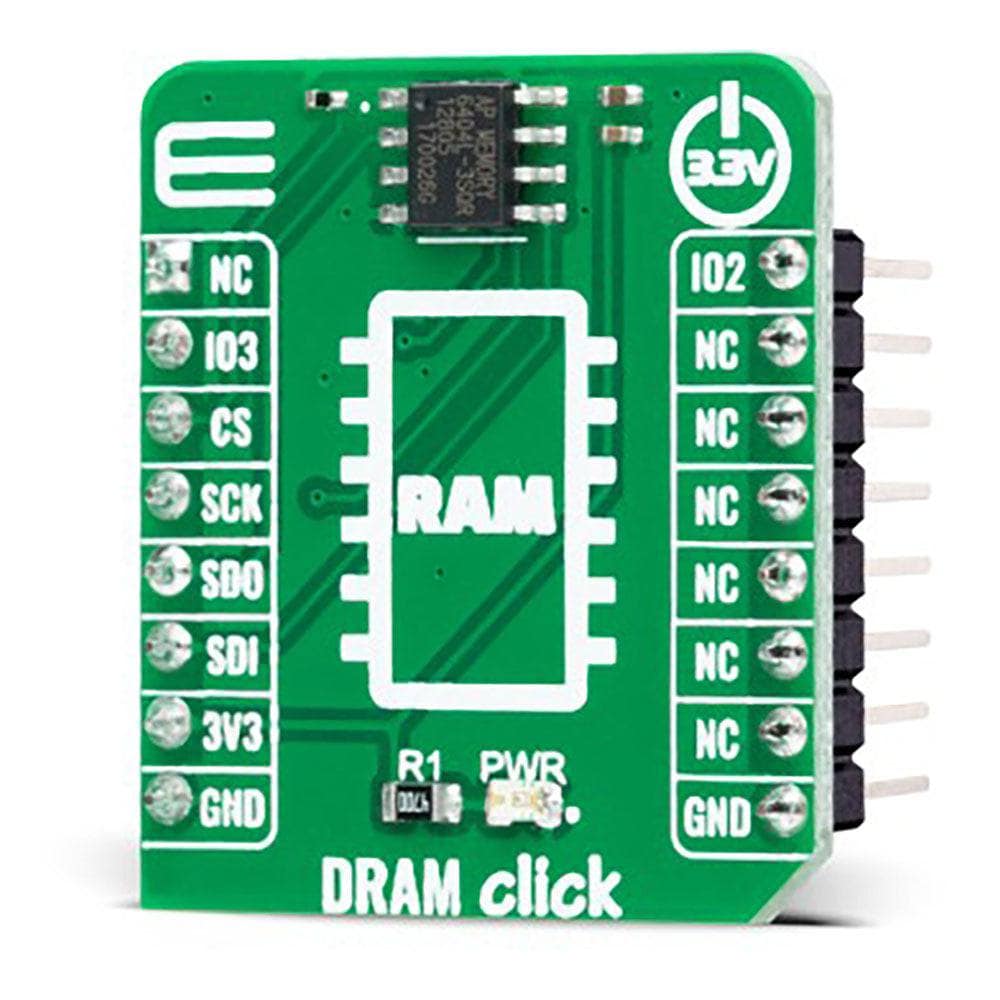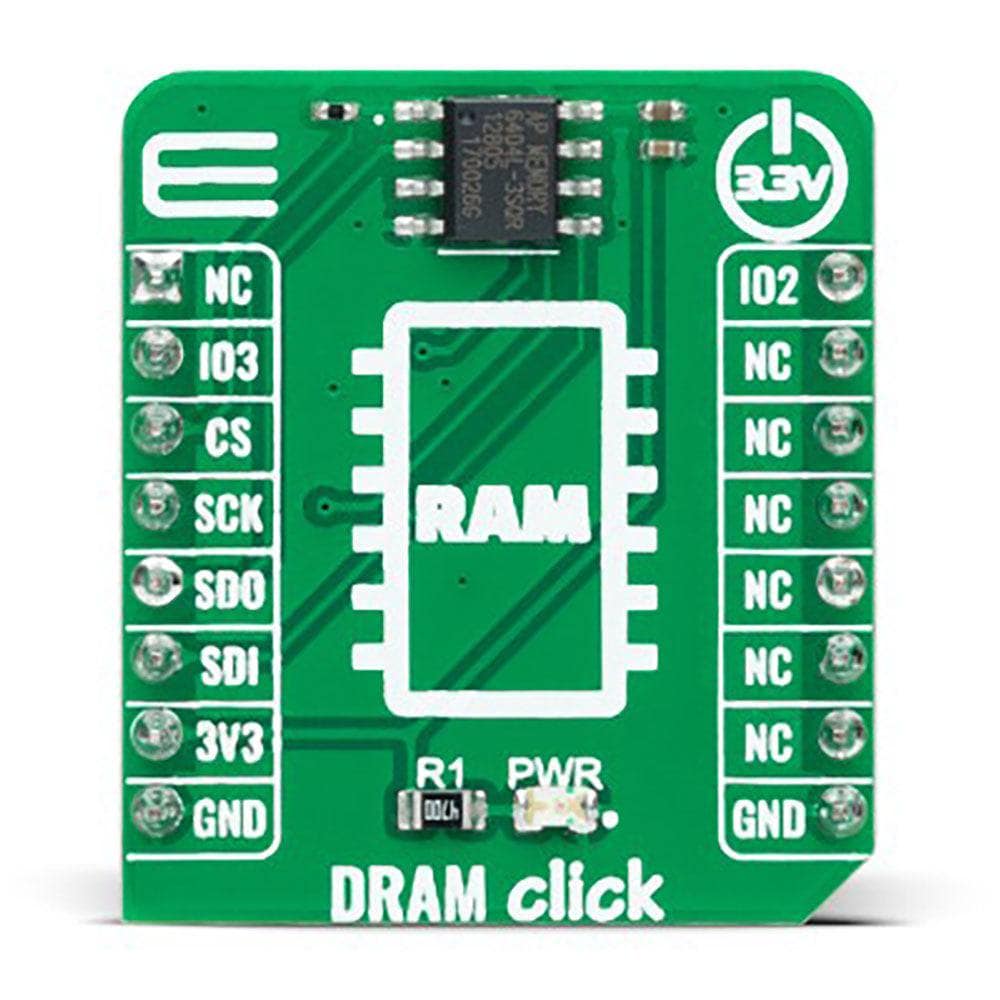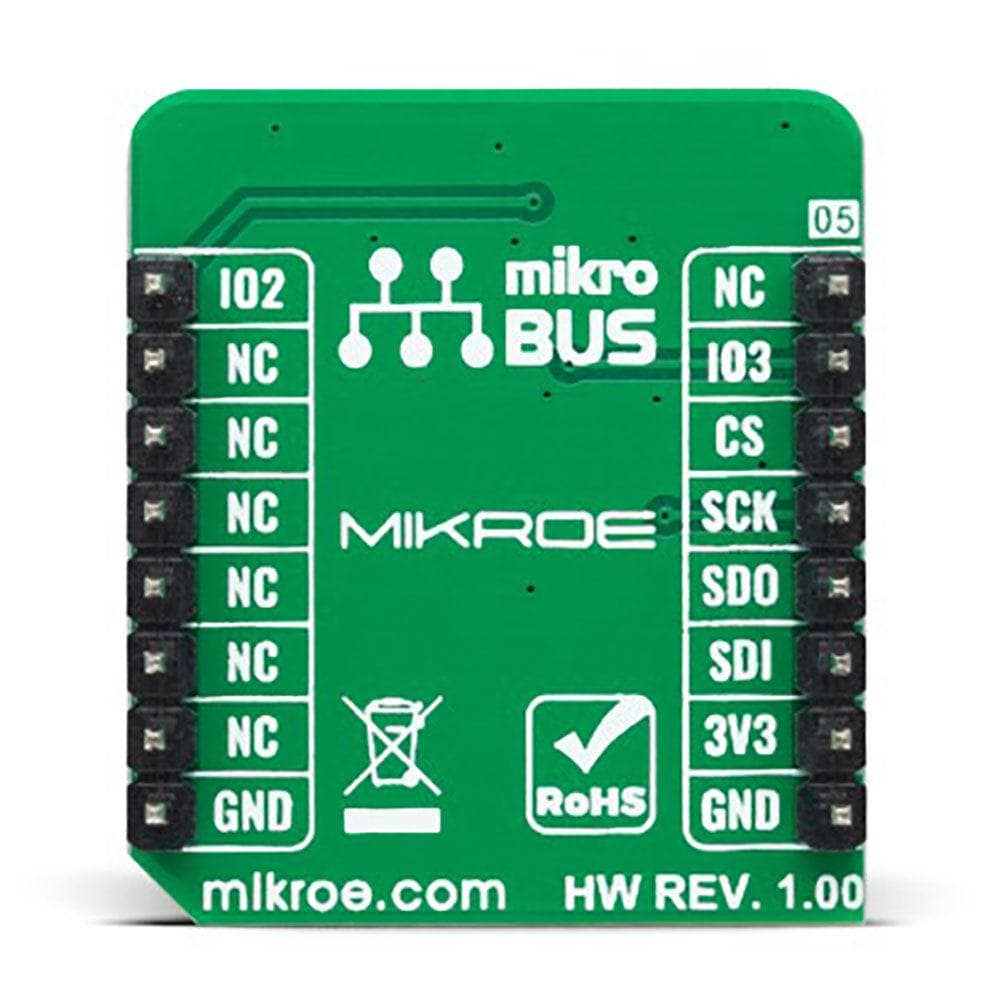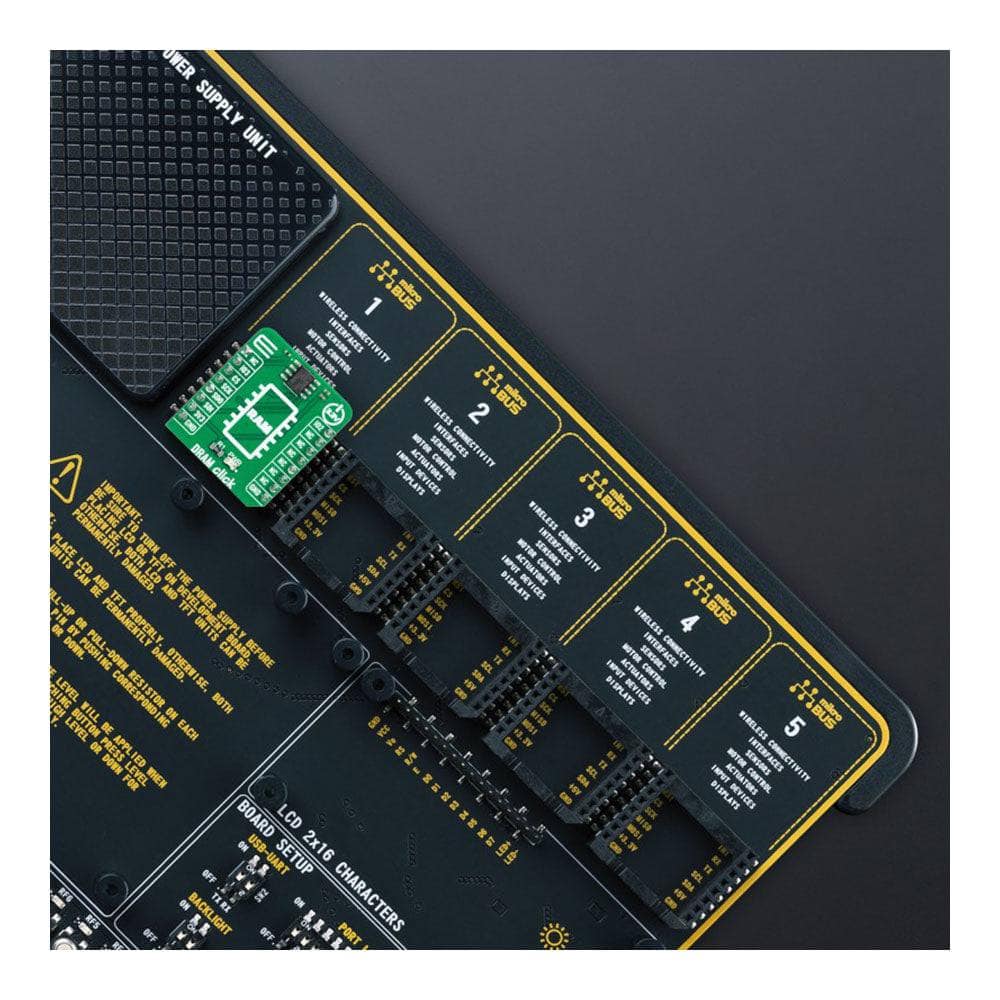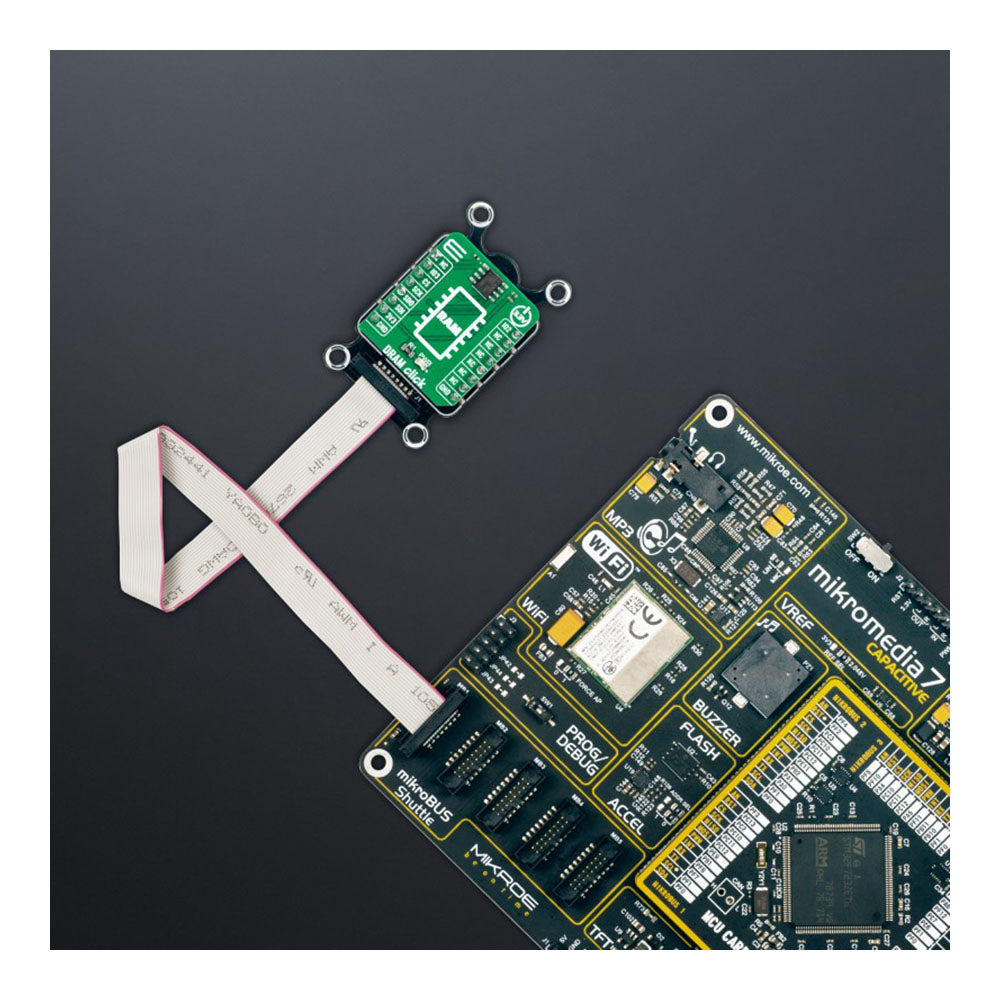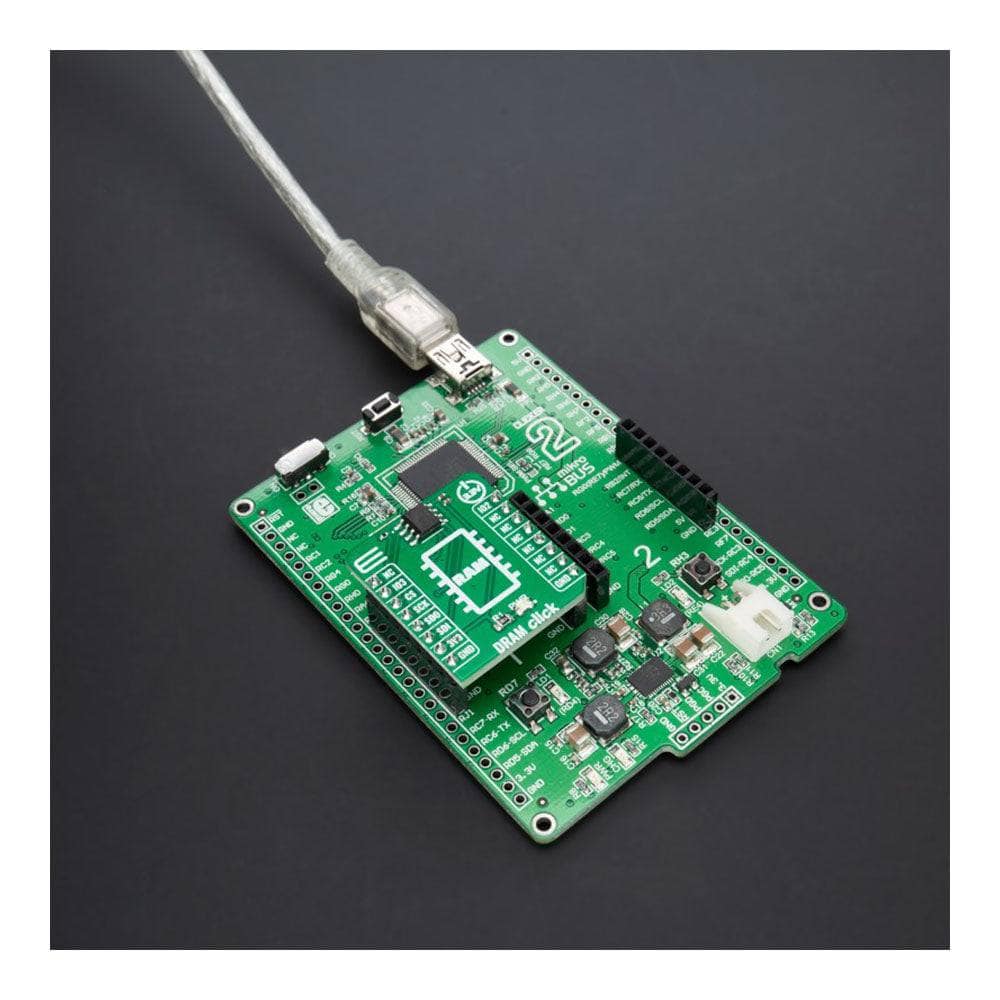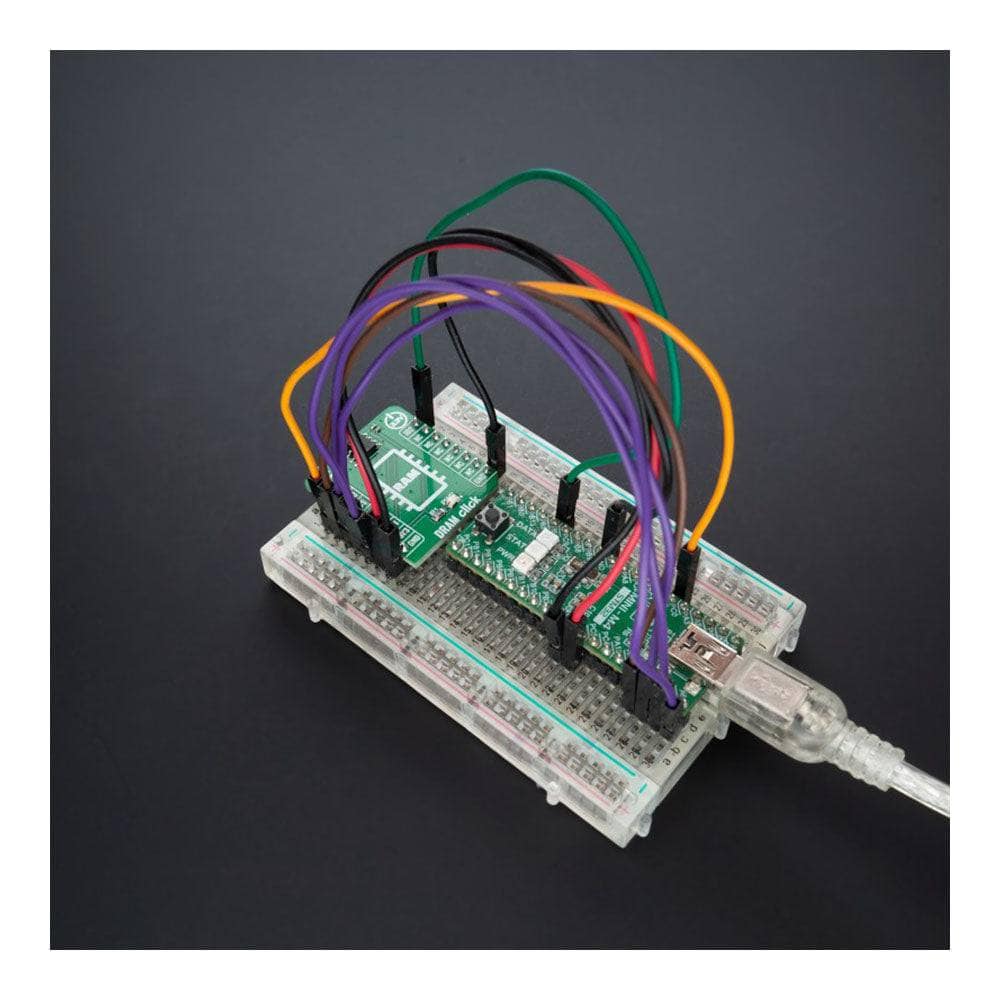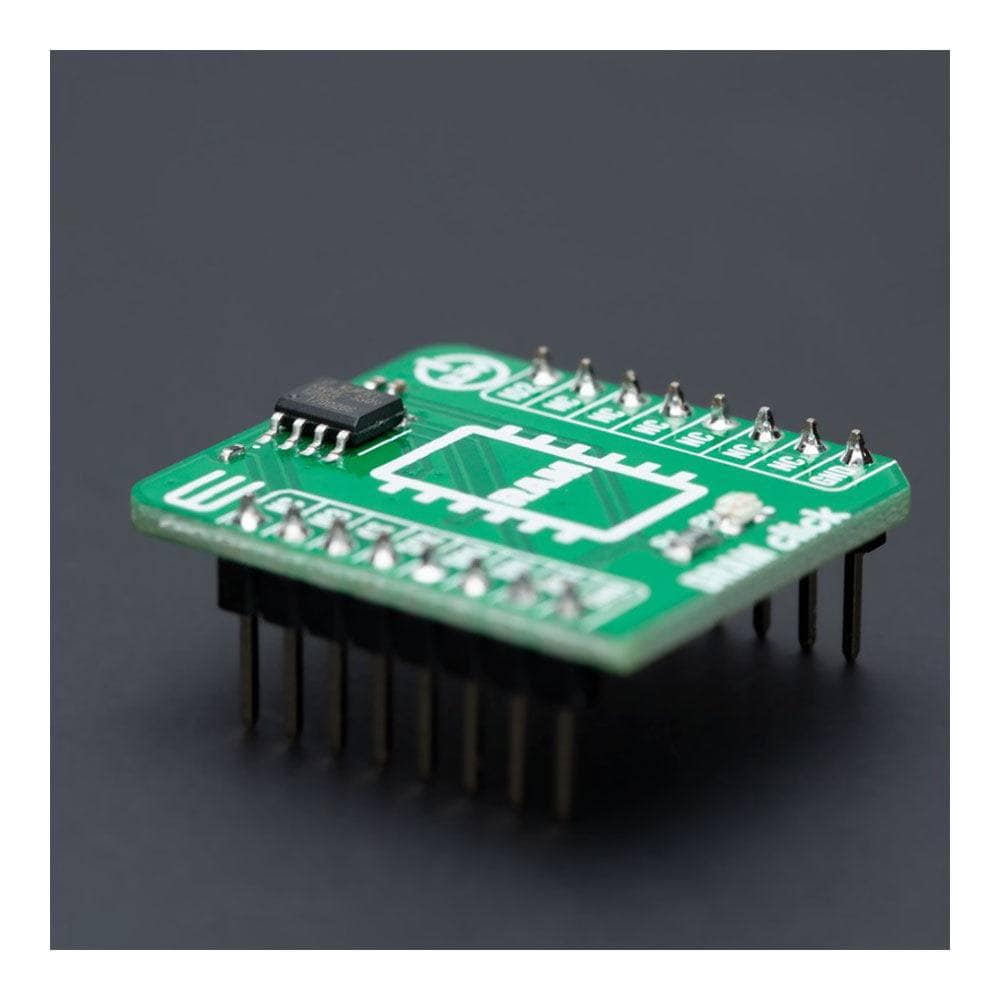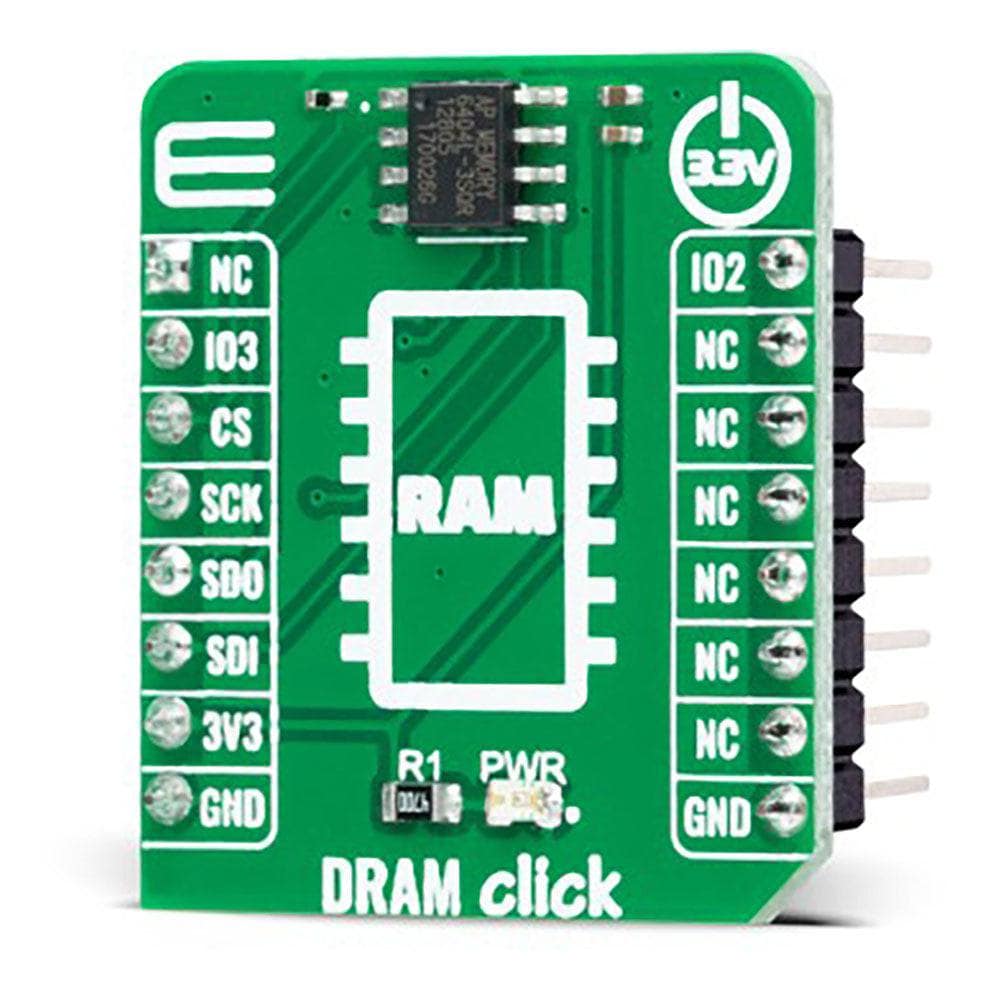
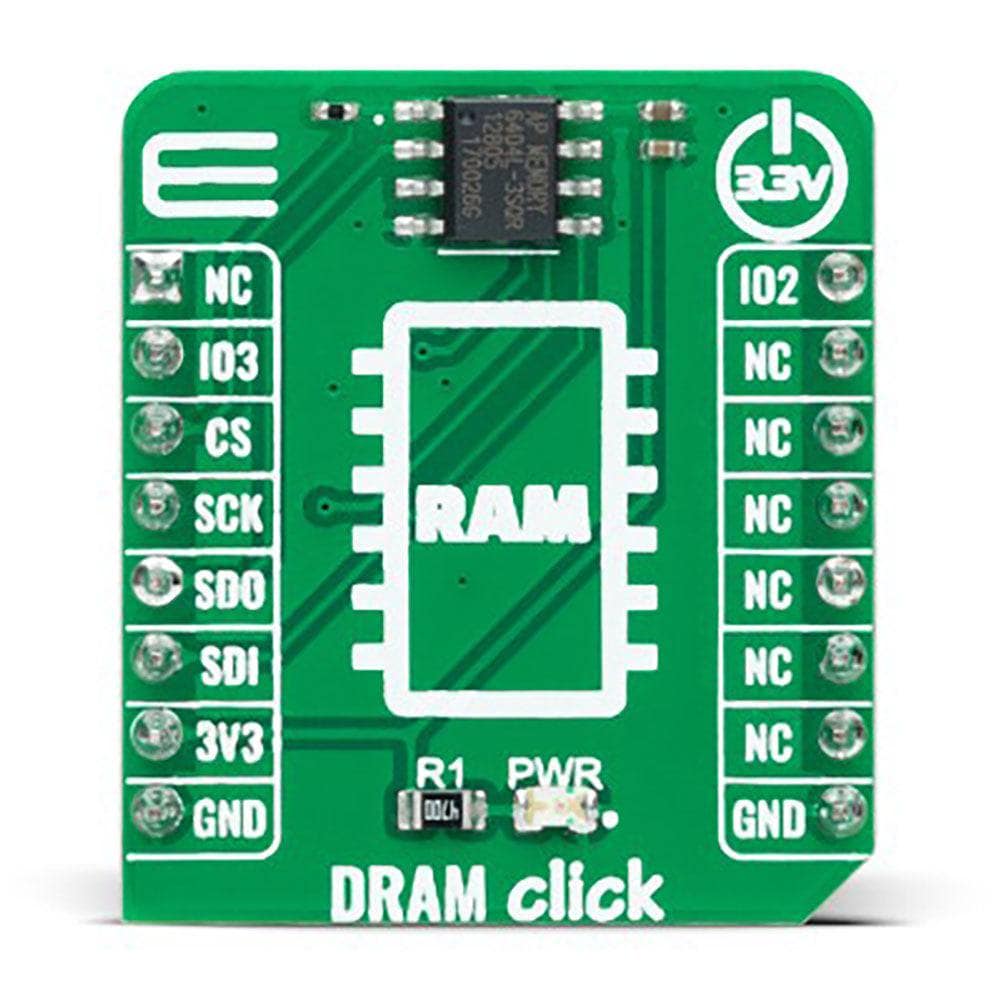
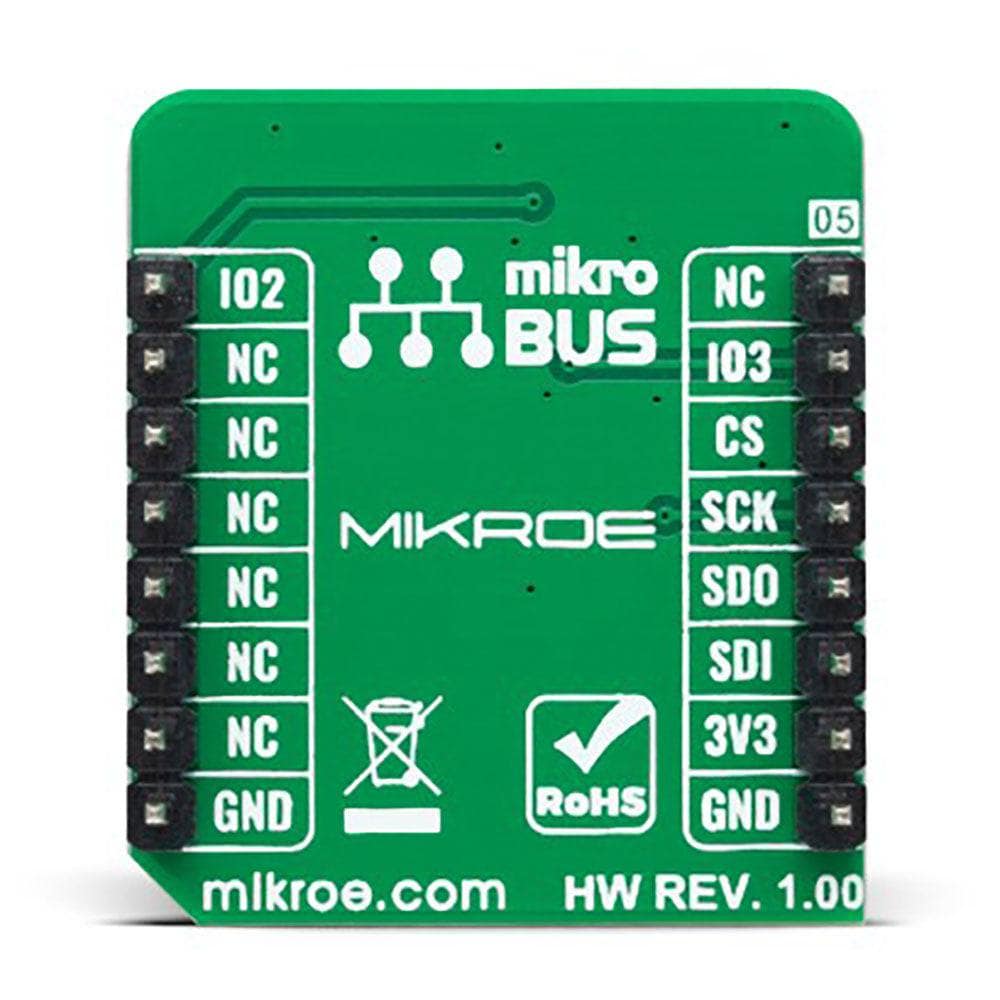
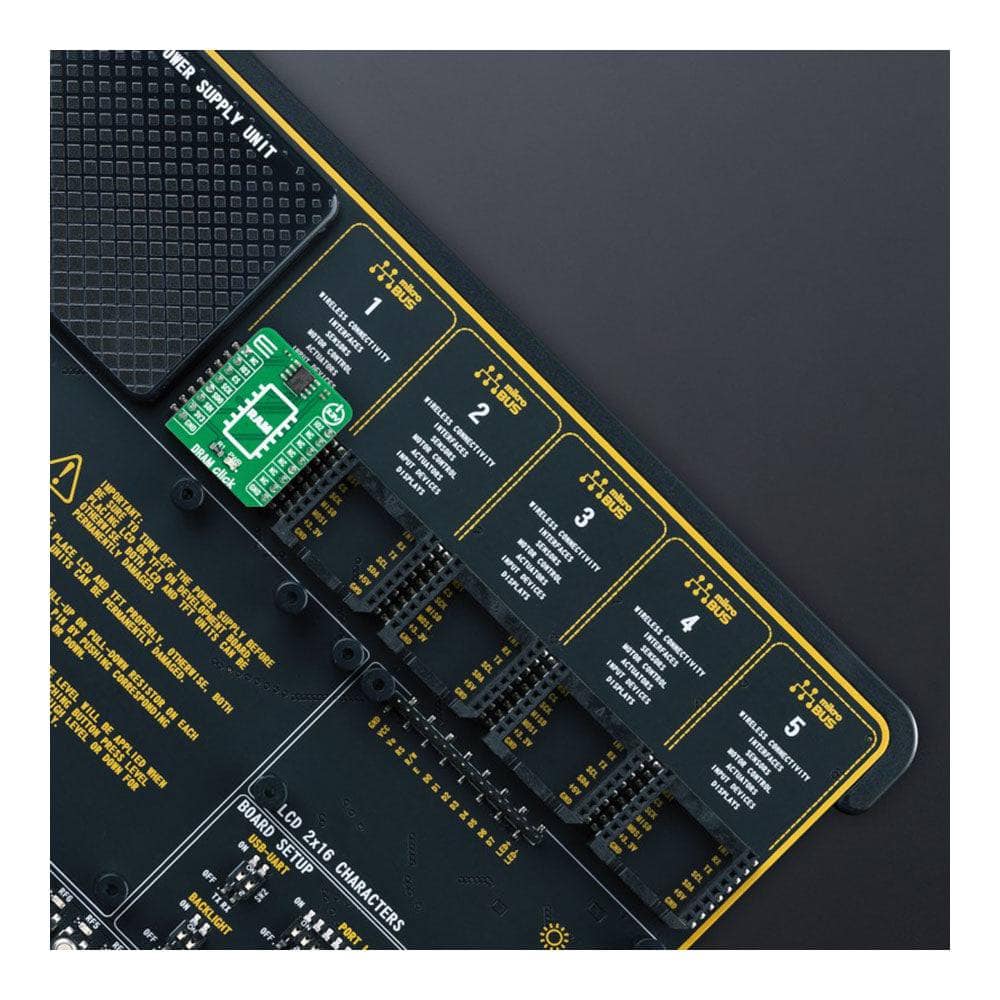
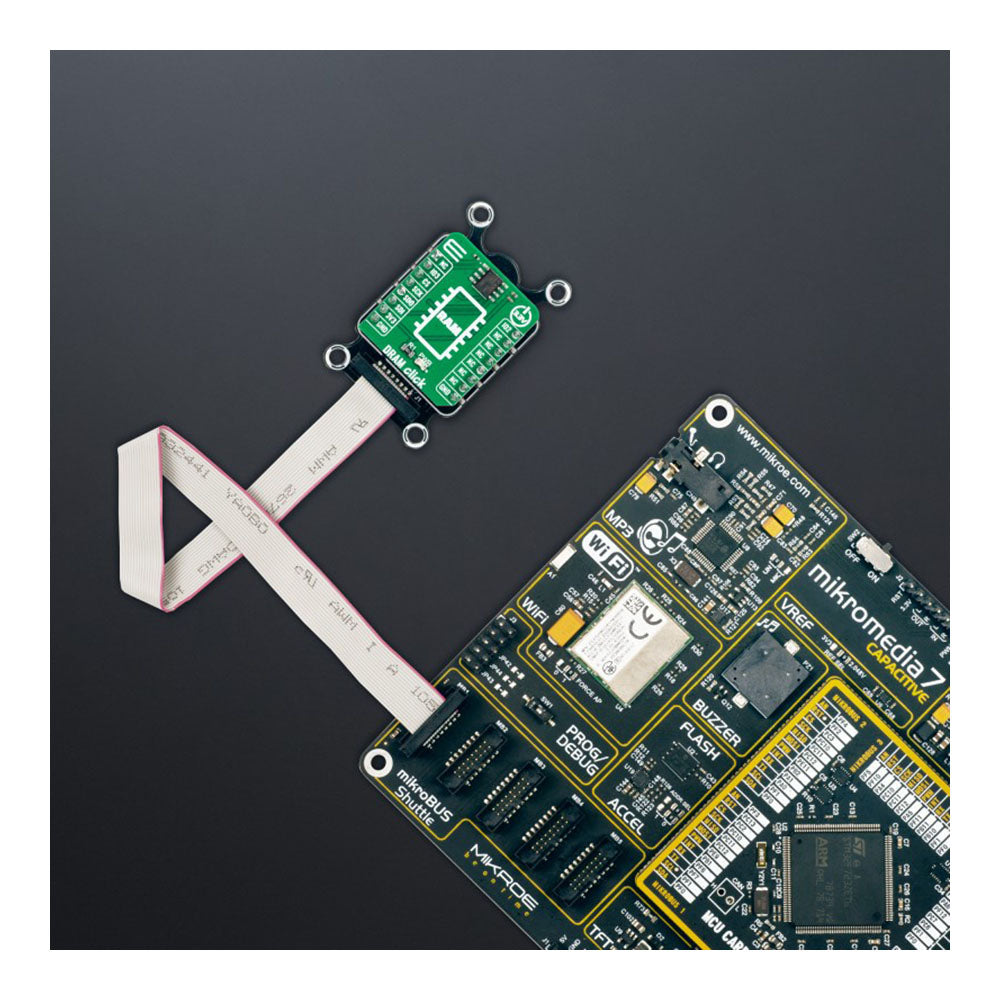
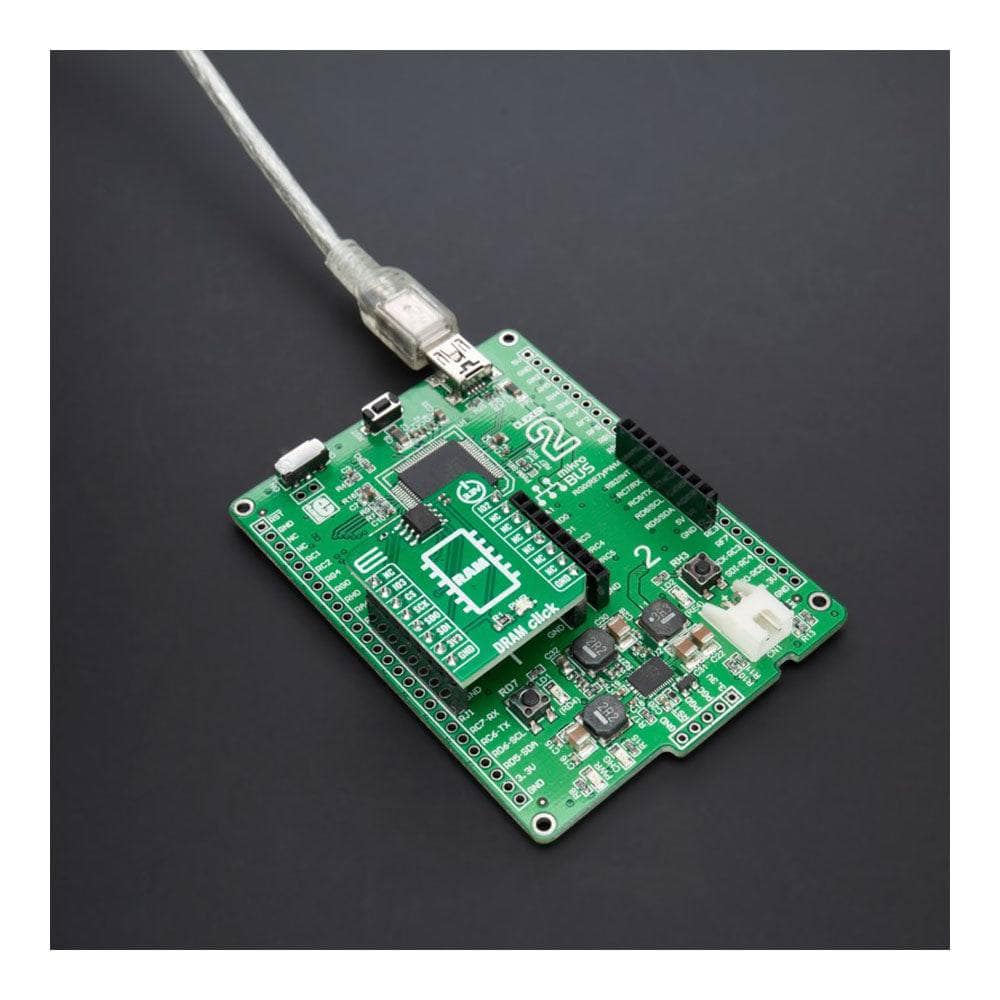
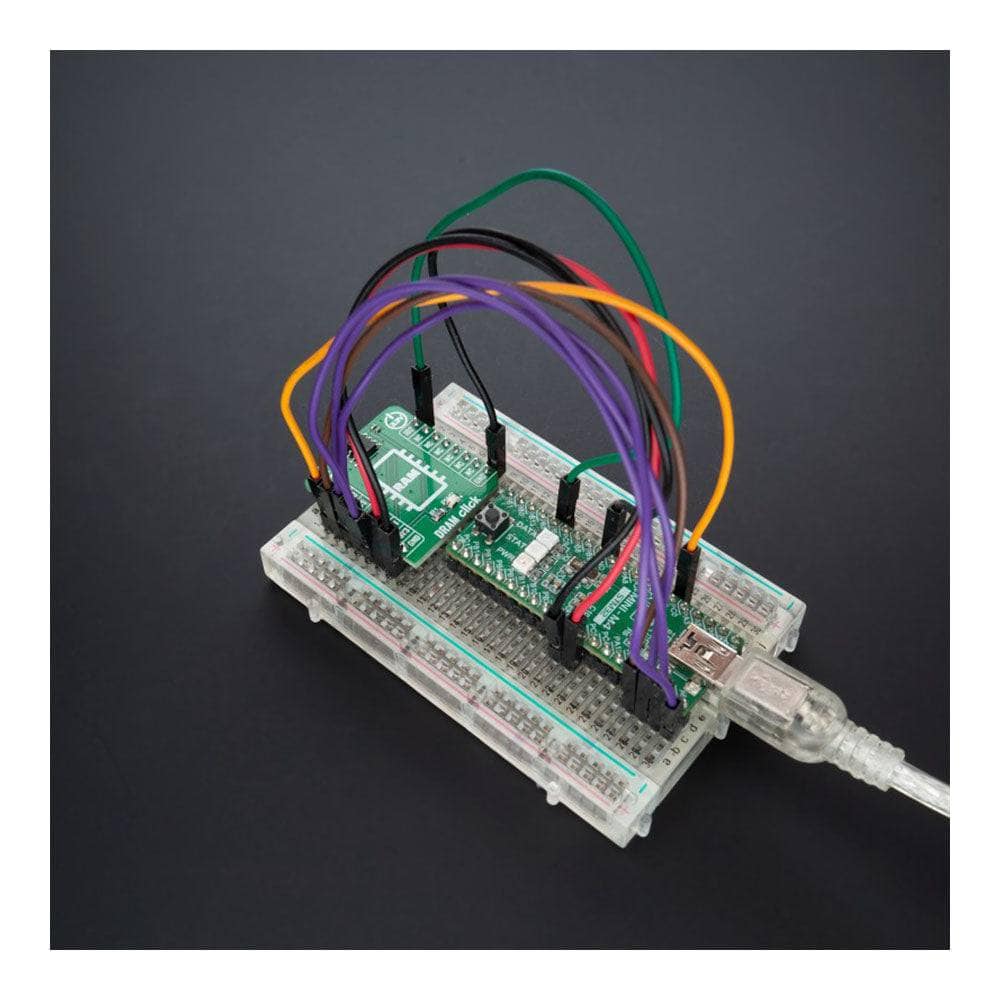
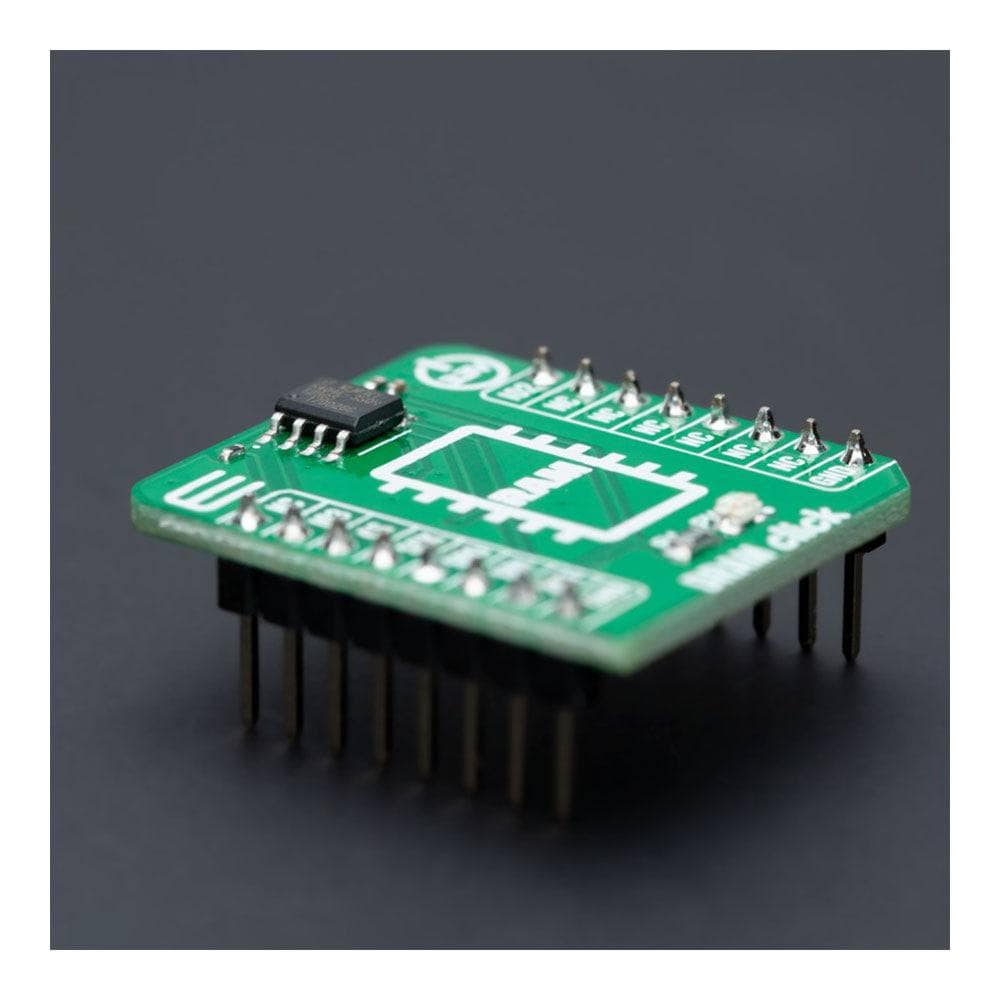
Key Features
Overview
Introducing the DRAM Click Board™
Upgrade your device's memory with the DRAM Click Board™, a compact add-on board representing a dynamic random-access memory solution. This board features the APS6404L-3SQR, 64Mb high-performance SPI/QPI PSRAM memory organized as 8M x 8 bits each from AP Memory.
High Performance and Low Power Consumption
The Pseudo-SRAM device of the DRAM Click Board™ features a high speed, low pin count interface and incorporates a seamless self-managed refresh mechanism to maximize the performance of memory read operation. With 4 SDR I/O pins and the ability to operate in SPI or QPI (quad peripheral interface) mode with frequencies up to 133 MHz, this Click board™ is most suitable for low-power and low-cost portable applications.
Simple Integration and Software Development
The DRAM Click Board™ is supported by a mikroSDK-compliant library, which includes functions that simplify software development. This Click board™ comes as a thoroughly tested product, ready to be used on a system equipped with the mikroBUS™ socket.
Upgrade your device's memory capabilities today with the DRAM Click Board™.
Downloads
Einführung des DRAM Click Board™
Rüsten Sie den Speicher Ihres Geräts mit dem DRAM Click Board™ auf, einer kompakten Zusatzplatine, die eine dynamische Direktzugriffsspeicherlösung darstellt. Diese Platine verfügt über den APS6404L-3SQR, einen 64 MB großen Hochleistungs-SPI/QPI-PSRAM-Speicher, der als 8 M x 8 Bits organisiert ist. aus dem AP-Speicher.
Hohe Leistung und geringer Stromverbrauch
Das Pseudo-SRAM-Gerät des DRAM Click Board™ verfügt über eine Hochgeschwindigkeitsschnittstelle mit geringer Pinanzahl und enthält einen nahtlosen, selbstverwalteten Aktualisierungsmechanismus, um die Leistung des Speicherlesevorgangs zu maximieren. Mit 4 SDR-E/A-Pins und der Möglichkeit zum Betrieb Im SPI- oder QPI-Modus (Quad Peripheral Interface) mit Frequenzen von bis zu 133 MHz eignet sich dieses Click Board™ am besten für tragbare Anwendungen mit geringem Stromverbrauch und niedrigen Kosten.
Einfache Integration und Softwareentwicklung
Das DRAM Click Board™ wird von einer mikroSDK-kompatiblen Bibliothek unterstützt, die Funktionen enthält, die die Softwareentwicklung vereinfachen. Dieses Click Board™ ist ein gründlich getestetes Produkt und kann auf einem System verwendet werden, das mit der mikroBUS™-Buchse ausgestattet ist.
Aktualisieren Sie die Speicherkapazität Ihres Geräts noch heute mit dem DRAM Click Board™.
| General Information | |
|---|---|
Part Number (SKU) |
MIKROE-5337
|
Manufacturer |
|
| Physical and Mechanical | |
Weight |
0.02 kg
|
| Other | |
Country of Origin |
|
HS Code Customs Tariff code
|
|
EAN |
8606027387111
|
Warranty |
|
Frequently Asked Questions
Have a Question?
Be the first to ask a question about this.

